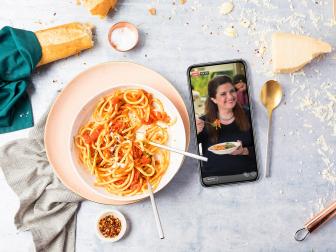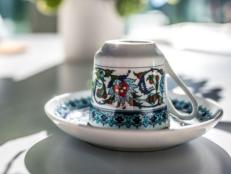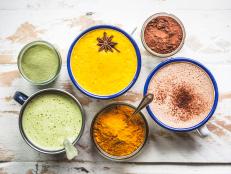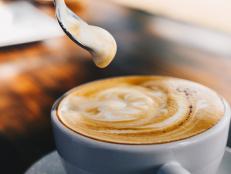Channel Your Inner Barista Right At Home with These Expert Coffee Tips and Tricks
Justin Warner shares a whole latte info for making the perfect cup of coffee.
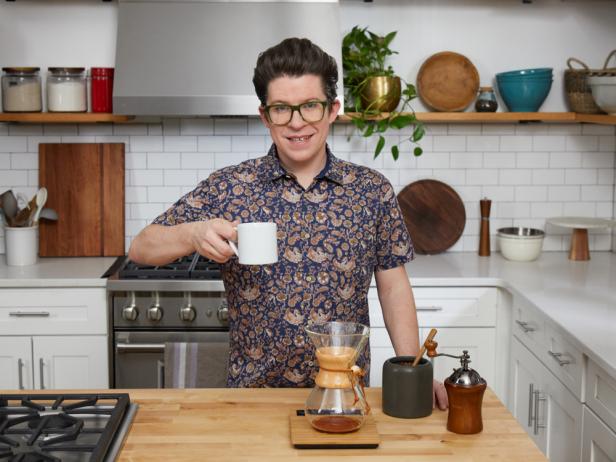
Andrea Patton
Get a Premium Subscription to the Food Network Kitchen App
Download Food Network Kitchen to sign up and get access to live and on-demand cooking classes, in-app grocery ordering, meal planning, an organized place to save all your recipes and much more.
It might shock people to know this but up until four months ago, I wasn’t the biggest coffee fan. Though I did drink it every now and then — usually right before a big work meeting — I often diluted it with so much milk that one of my co-workers dubbed my go-to order as “milk with a splash of caffeine.” It wasn’t until I started making and drinking cold brew coffee and espresso this past summer that I realized just how much you can achieve when you have the right coffee maker and coffee beans at your disposal. If you’re interested in learning more about everyone's favorite morning pick-me-up, watching Justin Warner’s Coffee 101 Course on the Food Network Kitchen app is a must. From French press and pour over to drip coffee and espresso, here are some of Justin’s expert tips for making the perfect cup every single time.
Whole Beans Beat Ground Coffee Hands Down
True coffee enthusiasts know that when it comes to a robust cup of joe, the beans you use make all the difference. Though it might sound silly when written down, not all coffee is the same, especially when it comes to whole beans versus ground coffee. Though buying ground coffee from the grocery store is more convenient, Justin maintains that starting with whole beans and grinding them by hand right at home gives you a lot more bang for your buck. “I always like to start with whole bean coffee and do the grinding myself, so that I can make sure that there’s plenty of flavor still intact here,” Justin mentions during his iced coffee class. “Once the coffee is ground, it sort of loses its spunk...It loses the characteristics that you are paying for, so for me it’s very important to go from whole bean to coffee.”
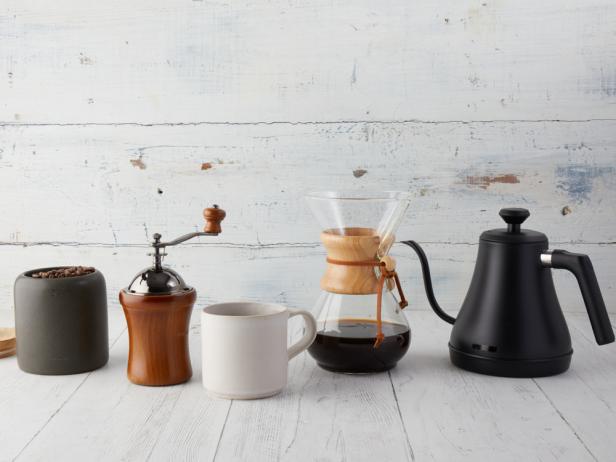
Andrea Patton
Let Your Coffee Dust Speak to You
During his class on espresso, Justin also shares an easy way to double-check if you’re getting your coffee to the right consistency when doing it with a handheld grinder. “One test for me is that when I rub it onto my fingers, do I see that it’s leaving behind dust?” he states. Justin then notes that if your freshly ground coffee resembles a texture that's finer than salt or sand, you’re good to go. “As you can see, this is so fine of a powder that it actually gets hung up on just the ridges and lines in the tip of my finger there. That’s pretty much what we’re looking for,” he shares.
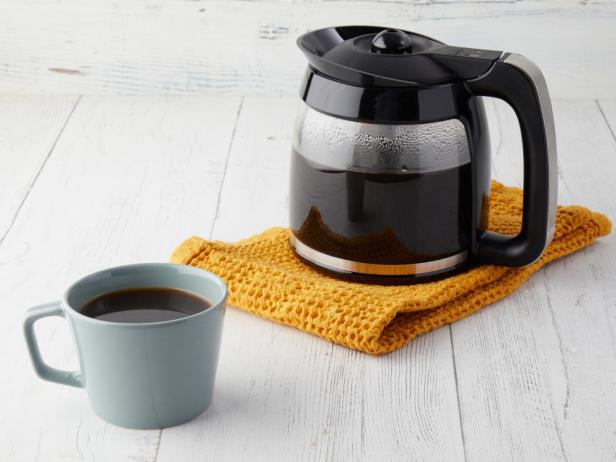
Andrea Patton
Sheet Pans Aren’t Just for Dinner
If you’re using an electric grinder to pulverize your whole coffee beans, Justin suggests placing a small sheet pan underneath it to make cleaning up any extra coffee sediment a total breeze. “I use a quarter sheet tray in my home,” he shares. "The idea is that I’ll clean that sucker like once a week, but it keeps that stuff from getting all over my beautiful countertops.”
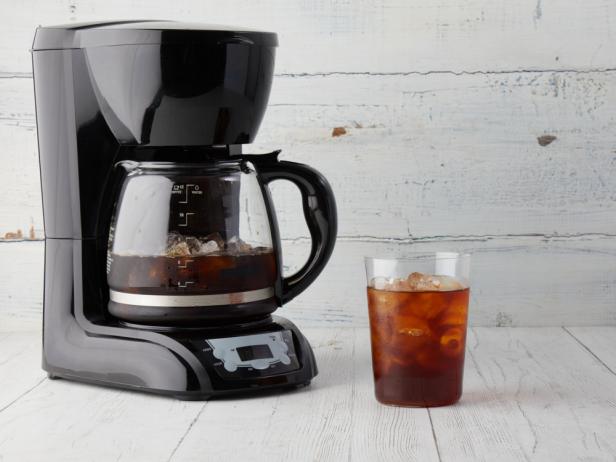
Andrea Patton
When It Comes to Iced Coffee, Always Double Your Ice
If you’re anything like Justin or me, you’re a big believer that iced coffee should be enjoyed year-round, even through fall and winter. Though making an iced coffee beverage from scratch might seem super easy, there truly is a science behind being able to keep your ice from melting as you pour your steaming hot coffee over it. To combat this, Justin suggests filling the pot of a drip coffee machine with a substantial amount of ice. “The idea here is that we’re making an incredibly concentrated and hot version of coffee up here,” Justin says, gesturing to the top of his drip coffee maker. The hot coffee will then hit the ice that’s sitting in the pot, which will in turn cool down your coffee and bring it to room temperature. You’ll then be able to pour it over even more ice without needing to worry about anything melting again. As Justin says it’s all about “thinking ahead a little.”

Andrea Patton
Before Pouring Coffee into Your Mug, Warm It Up with Some Hot Water
If you’ve ever wondered how your favorite coffee shop keeps their mugs nice and toasty at all times, you’ll want to tune into Justin’s class on French press coffee. Not only does he walk you through the benefits of using a kitchen scale — doing so will give you the most accurate measurement of your grind-to-cup ratio — but he also shows you how a little bit of warm water goes a long way. “If you want to do something really cool, you can warm your coffee cup ever so slightly with some of that hot water. Swirl it around just to take some of the room temp out of it,” Justin says. Talk about an extra cozy touch!
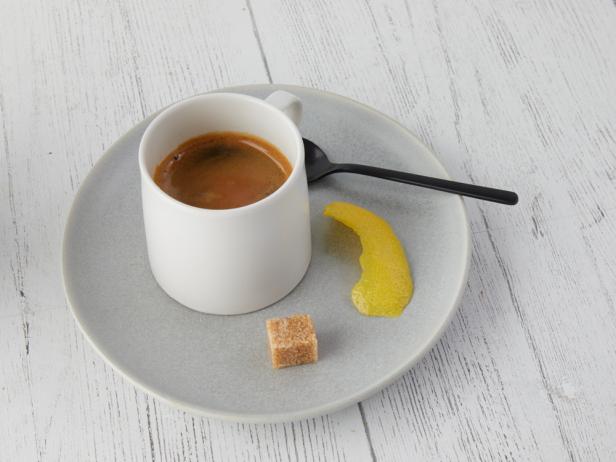
Andrea Patton
Add A Squeeze of Lemon to Your Espresso for Good Measure
If you’ve ever had a cappuccino before, you probably already know that espresso makes up its base. Strong, robust and intense, espresso is one-of-a-kind and should be thought of as such. “Espresso truly is very different from coffee in terms of the user experience,” Justin says. Because of this, you should allow yourself more freedom when it comes to customizing your cup. Before you do that though, Justin advises taking a small sip of your freshly brewed espresso first to give yourself a true coffee experience. “I like to sip coffee of all kinds, including espresso, while it is black to get the ‘as nature intended it’ sort of flavors,” he shares.
If you’re looking to jazz up your espresso without going too over the top with sugar or cream, follow Justin’s lead and serve it with a curl of lemon peel to give yourself a little extra zing. “Personally, the lemon peel is something that I think is cool. I think it adds a little splash of color, and I think that it’s a very unique, aromatic thing to experience with espresso,” he states.
Related Links:
























